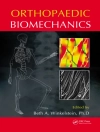Contemporary spinal surgeons, whether orthopedic or neurosurgeons, are increasingly recognizing minimally invasive spine surgery (MISS) as a desirable option to manage advanced degenerative diseases. MISS techniques minimize blood loss, surgical site pain, and speed recovery. Thus, the marriage of MISS with adult spinal deformity was a natural one. Currently, the techniques, technologies, and education of surgeons have finally reached a point where MISS deformity surgeries are becoming commonplace. Nevertheless, the field is young enough that no comprehensive texts have addressed the unique challenges faced by surgeons exploring this evolving field. This book will fill the gap.
Mục lục
Deformity Surgery Principles: The epidemiology of adult spinal deformity and the aging population.- Classification scheme for scoliosis.- Indications for surgery.- Sagittal balance.- Lumbopelvic parameters.- Importance of the fractional curve.- Importance of the fractional curve.- Radiation safety.- Impact of MIS surgery on costs.- Percutaneous Segmental Fixation: Fluoroscopic techniques.- Image guidance.- Nuances of thoracolumbar screw placement.- Rod contouring, passage, and connection.- Percutaneous pelvic screw fixation.- Managing osteoporotic bone.- Use of cement in MIS deformity surgery.- Posterior Approaches: Interbody cage options.- Multi-level TLIF for spinal deformity.- Expandable cages for thoracic spinal deformity.- Expandable cages for lumbar spinal deformity.- Lumbar endoscopic fusion.- Osteotomy techniques.- Lateral Approaches: Thoracoscopic approaches.- Role of neuromonitoring.- Single incision approach to the lumbar spine.- Dual incision approach to the lumbar spine.- Which side to approach from?- Stand-alone lateral surgery for deformity.- Thoracic interbody surgery.-Complications of the lateral approach.- Dealing with the Lumbo-Pelvic Junction: Mini-open ALIF for fusing the lumbosacral junction.- Trans-sacral interbody fusion as an adjunct to anchoring constructs at the lumbosacral junction.- Minimally invasive sacroiliac joint fusion.- Achieving Intersegmental Arthodesis: Bone graft extenders.-Minimally invasive Wiltse approach posterolateral fusion.- Facet joint fusion.- Future Directions.
Giới thiệu về tác giả
Michael Y. Wang is Associate Professor at the Departments of Neurological Surgery & Rehabilitation Medicine, University of Miami, Miami, FL, USA
Praveen V. Mummaneni is at the Department of Neurosurgery at the University of California, San Francisco, CA, USA
D. Greg Anderson is Professor at the Departments of Orthopaedic Surgery and Neurological Surgery at the Thomas Jefferson University and Rothman Institute, Philadelphia, PA, USA












